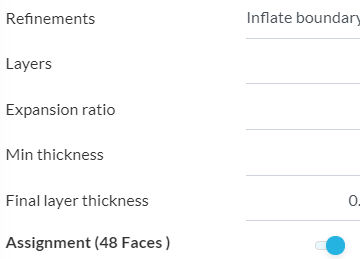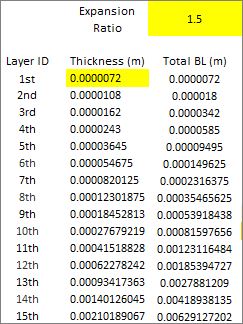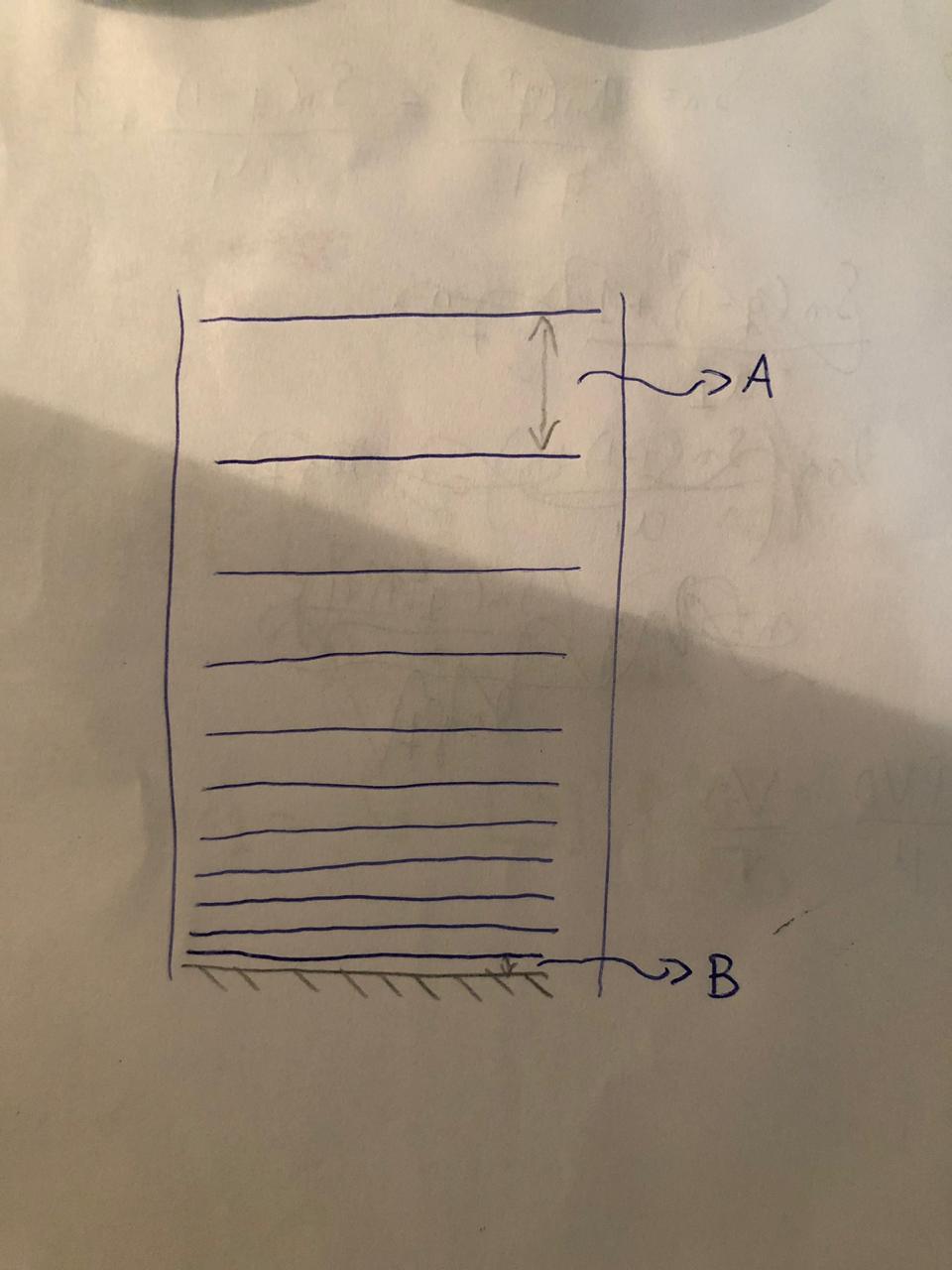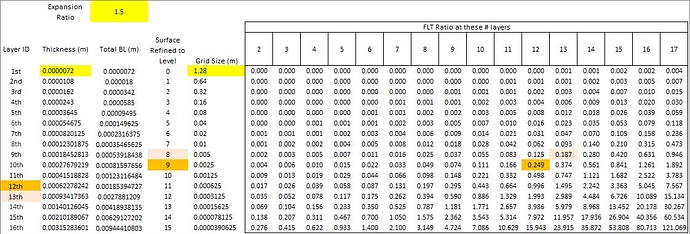I have some questions about the layer refinement. In this mesh you did, what value of Y+ were you aiming? And what value of expansion rate you used?
@math_marques96 it depends on what turbulence model you plan on using. I would start with the \kappa \text - \epsilon model and target a y^+ of about 50 with a growth factor of around 1.2 - 1.3 and a last layer thickness somewhere around 83\% of your standard surface mesh size. After running a few cases with \kappa \text - \epsilon you will know whether or not separation is an issue. If so, I would switch to the \kappa \text - \omega\,SST model and then target 1 \leq y^+ \leq 5 in the areas where the separation occurs.
The first model will get you about 90\% of the way there and the second will get you that last 10\%. It all depends on your time requirements and what you are looking to get out of the simulation.
Hello,
I made some changes in the layers refinement and acquired a better mesh. I am in doubt about a layer parameter.
I found this forum Boundary layer inflation thickness - #4 by AnetaNovak and it was not clear for me if what parameter is the “final layer thickness”. On this forum there is also a “first layer thickness” parameter that not appear in my simulation.
I uploaded this draw of a boundary layer, to show my question, the parameter “final layer thickness” is the A or B? Is it possible to choose between using the “final layer thickness” or “first layer thickness”, I did not understand if it is the same also.
Hey @math_marques96!
- firstLayerThickness - first layer in the boundary layer (next to the wall) \rightarrow B
- finalLayerThickness - last layer in the boundary layer \rightarrow A
Hope that helps 
Jousef
Thank you very much!!
In my simulation, the “final layer thickness” parameter appears. Is it possible to I select the “first layer thickness” parameter instead? I am not finding where I can select this option.
Our PowerUser @anirudh2821998 has posted a good procedure for this here: Boundary layer inflation thickness - #3 by anirudh2821998 - if anything is missing for your calculations, please let us know and we will fill this gap!
Best,
Jousef

I read the post and did not find where can I change the “final layer thickness” to the"first layer thickness". This is what shows in my simulation:
That is impossible to do, you must create a table like this (and you have to read and understand how the mesh parameter ‘Layer Size’ affects the value of what you enter in the ‘Final Layer Thickness’ (FLT) parameter):

If ‘Layer Size’ is ON (also known as Relative Layering), then FLT is a dimensionless Ratio of the final prism cell size to the adjoining volume mesh cell.
If you choose to use Relative Layering (I do) then you need a further table that lets you pick your FLT ratio based on the surface level refinement, which you choose to refine all the faces that you are putting a boundary layer on (I generally use an FLT ratio of ~0.2 to ~0.4 but that is not a hard rule):
If ‘Layer Size’ is OFF, then FLT is an absolute thickness in meters of the final layer that touches the volume mesh cell.
Here are the steps to make the desired number of inflation layers
-
Use any y+ calculator to get the value of first layer(nearest to wall). Just feed in some values asked by the calculator and you will get the suitable thickness of first layer. I prefer to use this calculator- http://www.pointwise.com/yplus/
-
Decide a suitable expansion ratio and number of inflation layers. Then determine the thickness of farthest layer —a*(r^(n-1))
a= first layer thickness, r=expansion ratio and n= number of layers -
Check whether relative sizing option is on/off. I usually prefer my relative sizing option to be off.
Thanks
Ani


